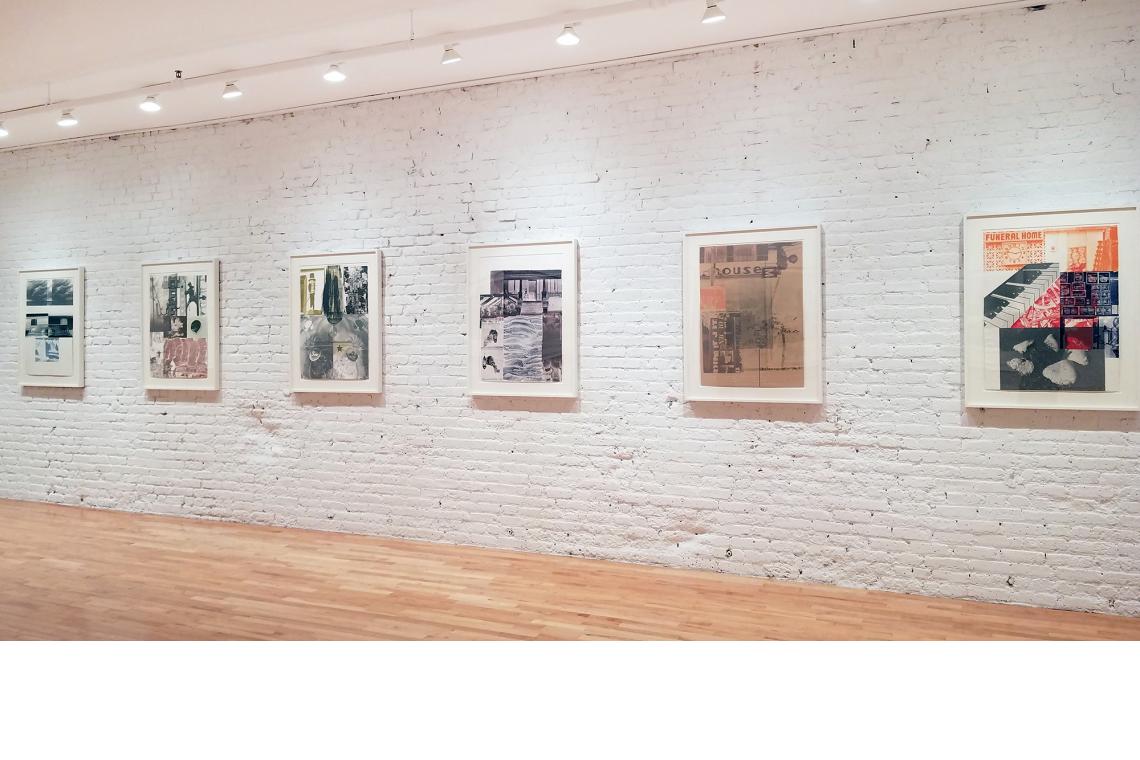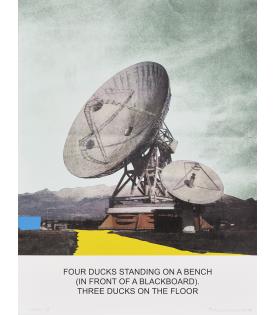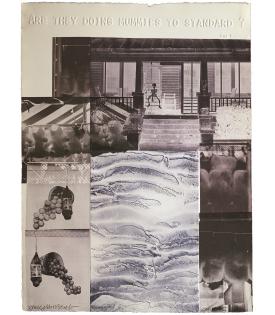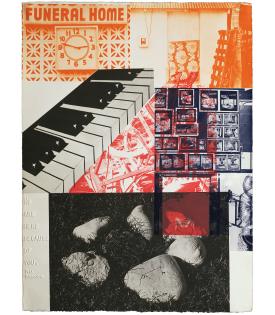Gemini G.E.L. at Joni Moisant Weyl is pleased to announce two concurrent exhibitions in our Chelsea gallery that highlight the relationship between text and textiles: Warp & Weft: A History of Fabric at Gemini G.E.L., featuring artists who use various forms of cloth in their editions; and We are the language, presenting a range of prints and sculpture multiples that feature the written word. A third exhibition, the complete series of Jasper Johns’ Fragment—According to What from 1971, is also on view through April 28, 2018, in our Project Space.
The word ‘text’ is derived from the Latin ‘textere,’ which translates as “to weave, to join, fit together,construct.” The two concurrent exhibitions forge a relationship between the textile and the textual, assentences are woven into the visual, and fabrics become visual metaphors.
We are the language takes its title from a single embossed text in Robert Rauschenberg’s American Pewter with Burroughs series, Gemini's first collaboration involving an artist and a writer. Rauschenberg created his imagery in response to words written by William S. Burroughs, and each of the six lithographs in the series is embossed with a phrase or passage that Rauschenberg selected; slyly referencing the series’ title, cool, metallic grays set the tone of each print. The exhibition also includes works by John Baldessari, Sophie Calle and Allen Ruppersberg, artists who are well known for employing language in their artworks.
Baldessari, throughout his career, has investigated the relationship between written and visual language, often expressing those mechanisms in compositions that are interrelated and slyly ironic. The News (2014) manipulates images from newspaper and combines them with unexpected textual descriptions to create evocative narratives and social commentary. The Address Book is classic Sophie Calle: the artist finds an address book in Paris, on (where else?) the Rue des Martyrs, and before returning it to its owner, she contacts the people whose names are in the book and asks them to reveal what they know about the book’s owner, Pierre D. Formally complex, The Address Book consists of 28 pages of text and photographs, 3‐hole punched so that, as an alternate to being framed and presented on the wall, they can be read in a black bookcloth‐covered ring‐binder. Three individual prints, one a red cloth-covered visual representation of the actual found address book and two others that are embossed texts, are presented as formal, framed artworks and accompany the ring-bound pages. And, in likely the most technically challenging print in the exhibition, Allen Ruppersberg captures an evocative vision of American cultural heritage. Great Speckled Bird spans over 20 feet, and American folk songs, transcribed anonymously, are combined with vintage hotel stationery and screenprinted on a perforated player-piano paper roll in a sequence according to the artist’s formal decisions.



















